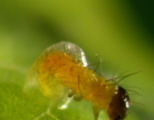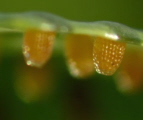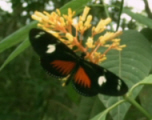Weird Animals
Rainforest Specialists
Living Planet
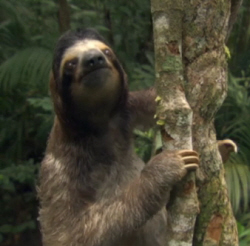
The Three-toed sloth has a very peculiar diet. Being a fussy eater she feeds on only one or two type of tree, the leaves of which are tough and full of toxins. But her gut has evolved to host bacteria which are specially equipped to break down these otherwise inedible leaves.
It’s a slow process. Digesting this salad can take weeks. She gets so little energy from this diet that she’s forced to keep her movement to a minimum. She’s almost become part of the forest furniture. So much so that other creatures have started to move in. She is the ideal home for a colony of sloth moths. The way she looks, the way she eats and the way she moves are all a result of having to overcome heavily defended leaves and THAT is why sloth’s our so weird – they’re specialists.
In order to survive in a rainforest, you need to be a specialist. There are no jack of all trades here. The battle between plants and animals goes on every day and it’s this battle that creates the jungles biodiversity. The resulting collection of weird animals is a subject of immense fascination for Chris Packam.
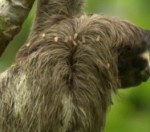
Let me show you what I mean, with one of the most toxic plants of all. This is a passion flower vine and its leaves are laced with a pretty toxic defence. Cyanogenic glycoside molecules, and when they break down, they form cyanide. As you might imagine, it works wonders because cyanide is every bit as dangerous to insects as it is to us humans. Well, that is to the majority of insects, but not all of them.
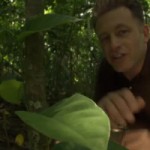
These are caterpillars from a species of butterfly called Heliconius Doris. They have evolved a unique internal body chemistry, to do what few other creatures can – counteract the plants deadly cyanide. They even incorporate the poison into their own bodies. And after metamorphosing in into the adult butterfly, their bright colours advertise their toxicity. Very clever.
As one of the few weird animals that can eat these leaves, they have this food source pretty much all to themselves. But the downside is, they can’t eat anything else. They are wedded to this vine. The adult butterflies will not lay their eggs on anything else. But of course, plants evolve too.
This is a different species of passion flower vine. It grows in exactly the same patch of rainforest as the first. And were it to arm itself with exactly the same cocktail of cyanide as that first plant then clearly it wouldn’t be able to protect itself from these Heliconius Doris caterpillars, so it doesn’t do that. It’s changed very subtly the type of compounds that it’s got in the leaves that produce the cyanide. And as a consequence of that, it’s totally toxic to this species of Caterpillar. A victory for the vine perhaps! Yet THIS is a never-ending battle.
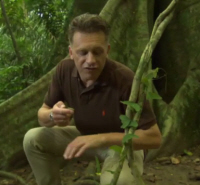
Another species of butterfly has evolved. One that can cope with the different toxins. Introducing Heliconius cydno. It’s wing patterning is a little different to that of Heliconius Doris. But the most important changes are internal. Because each of these butterfly species has evolved to be able to eat a different type of vine. The battle between plant defence and Caterpillar attack never stops. The result? A proliferation of species of both vine and butterfly. In fact, each species of plant and tree in the rainforest has ended up with his own specialised pests. It’s become an evolutionary arms race.
Just as pest pressure is driving the diversity of trees, the diversity of trees is driving the diversity of tree pests. And it’s not just a pests, their predators too. Animals like the praying mantis are continually evolving to try and outwit those pests, which, in turn, are continually evolving to try and outwit the mantis.
If conditions in the forest here remain stable, and new species have time to evolve, one thing is for certain. This rainforest will become a whirlpool of biodiversity.


